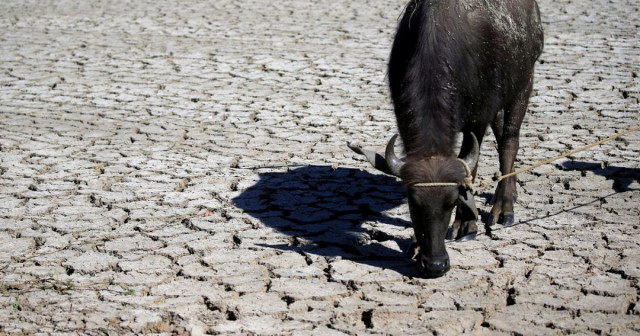Cleaning up polluted soil is 'humanity's next great challenge'
Human activities contaminating some 5 million locations globally, says environmental scientist

A water buffalo is seen on cracked soil at a dried up rice field in Baliuag town, Bulacan province, north of Manila. PHOTO: REUTERS
Human activities, such as mining and manufacturing, waste from livestock, industry and urban sprawls, and pesticides and fertilisers are the main pollutants contaminating some 5 million locations globally, said environmental scientist Ravi Naidu.
"To remediate all the contaminated sites is humanity's really next great challenge," Naidu, who heads the Global Centre for Environmental Remediation at the University of Newcastle in
Australia, said at the opening of a soil pollution conference.
Soiled soil: Toxic levels of metals found in city’s vegetables
"Earth is now affected by more than 144,000 man-made chemicals ... They not just impact soil, but water, the aquatic system and human health."
Soil pollution is a poorly understood, but growing, problem, experts said, with some countries increasing their pesticide use, while the risks of new pollutants, such as waste from old electronics and plastics, are only just being acknowledged.
Clean ups can cost millions of dollars, a huge burden for developing countries, short of both money and manpower to make their soils safe, Naidu told the Thomson Reuters Foundation.
Hospital construction project handed over to works and services dept
The world has only cleaned up about 10 per cent of contaminated sites in about half a century, he added, calling for more regulation and a global accord on contaminants, similar to the Paris Agreement to combat climate change.
Without a systematic global assessment of soil pollution, it is hard for nations to understand the scale and severity of the threat, the United Nations' Food and Agriculture Organization (FAO) said.
"We know it's a problem but it has been difficult to quantify," said Marco Martuzzi, an environmental expert with the World Health Organization, which is assessing the health impacts of landfills in Europe.
"When we have acute effects like children dying and contamination that goes through the food chain ... It's not an acceptable situation."



















COMMENTS
Comments are moderated and generally will be posted if they are on-topic and not abusive.
For more information, please see our Comments FAQ